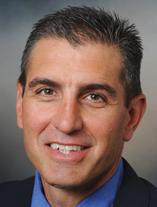Dear Cyclone Fanatics, (CLICK HERE TO BOOK AN APPOINTMENT W/ DR. GREENWALD)
This week I will be discussing a very common sports injury that can occur in the high level athlete, or (more often) in the ‘weekend warrior’ – the Achilles tendon rupture. 
Tendons attach muscle to bone and act like a pulley, moving our limbs in space. The Achilles tendon (calcaneal tendon) is a thick band of tissue in the back of the ankle that connects the powerful calf muscles to the heel bone (calcaneus). Occasionally called the heel cord, it is one of the largest tendons in the body. When the calf muscles contract, the Achilles tendon is tightened, pulling the heel up, which allows you to stand on your toes and point your foot. It is needed in order to walk, run, and jump.
A complete Achilles tendon rupture can occur when the force across the ankle joint is greater than the strength of the tendon, which often times can be weakened secondary to age or to overuse. A sudden forceful push-off with your foot (while your knee is straight), such as starting a sprint, or jumping, or even if you suddenly trip and stumble and your foot is thrust in front to break a fall, can cause such an injury. This can typically occur in basketball, volleyball, or tennis.

The complete rupture of the Achilles tendon causes one to lose significant strength and function. A partial injury may just cause pain and sports limitations. A partial injury may respond to non-operative treatment, but a complete tear is typically treated with surgery. The literature supports this as return to sporting activity is facilitated, with greater strength and less re-tears/re-injury with operative treatment. There are differences in surgical technique, but the overall goal is to re-approximate the torn tendon ends in an anatomic and robust fashion. This usually involves suturing techniques, with postoperative immobilization initially, followed by vigorous rehabilitation (to get strength and range of movement back).

Ultimate recovery and return to sport can take many months, as the body’s healing process has its own timeline and can only “be sped up so much”. It’s not unusual for an athlete to admit that complete recovery is 6-8 months, and that they “don’t feel normal” until they are one year out from their surgery.

Let’s hope none of our Cyclone Fanatics ever sustain such an injury, but if you do, give us a call at McFarland Clinic Orthopedics department (515-239-4475), and we can fix you up, just like we do the ISU Cyclones. Go State!
Thomas Greenwald, MD



